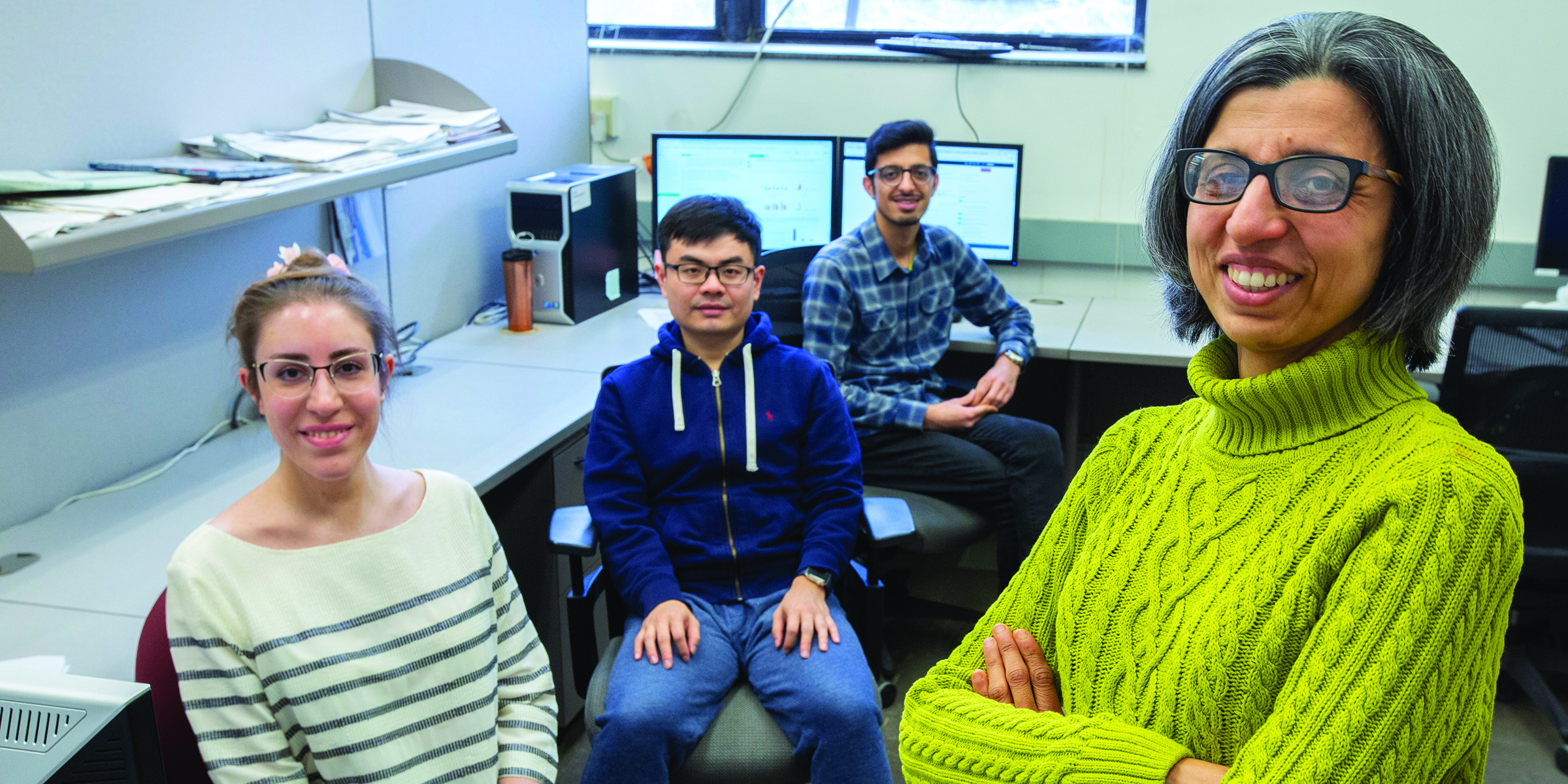Big data holds big potential for solving pressing problems of our time – but big data also brings the significant challenge of working with high dimensional data sets. Namrata Vaswani , professor of electrical and computer engineering, is developing novel algorithms for high-dimensional data recovery.
Her algorithms can recover data from noisy or distorted measurements and are fast, online and memory-efficient. Vaswani’s approach focuses specifically on exploiting the inherent structure present in the data, such as sparsity or low-rank, as well as the time dependencies of these structures in order to recover data.
“When you exploit time dependencies, or other structural properties, you can get away with less observed data or noisier data and still make meaningful conclusions,” said Vaswani.
One example is functional MRI images of fast-changing body processes like a beating heart or changing brain activation. Vaswani’s technique in dynamic compressive sensing was the first data recovery method of its type to show significant sample complexity gains in functional MRI imaging. The development gives doctors better, richer data to make decisions from, while minimizing patient time in the MRI machine.
More recently, Vaswani’s research group has worked on developing new tools to simplify automatic video analytics. Since all video is naturally full of data outliers in the form of foreground images blocking background images, Vaswani’s expertise is uniquely suited for the task. Previous online (real-time) approaches could only process video under narrow, far-from-realistic conditions. But, Vaswani has shown the first provable solution, called Recursive Projected Compressive Sensing (ReProCS), that can handle the high amount of data outliers found in realistic video with static backgrounds.
“Moreover, ReProCS is fast and has near-optimal memory complexity, both of which are the most important factors in determining the practical usability of any algorithm in today’s age of big data,” said Vaswani.
Applying Vaswani’s techniques may help automated video recognition catch up with existing automated photo recognition tools – and may even help with another video challenge: improving the data quality of online video streaming services’ recommendation systems, which only work as well as they can handle high amounts data outliers.
Vaswani is now working on exploiting time varying structural properties to solve even more difficult non-linear data recovery problems often faced in “phase less measurements” areas like X-ray imaging, optics or astronomical data. Her new algorithms will be aimed at speeding up “phase retrieval” data recovery and minimizing cost of higher-resolution measurements by exploiting structural assumptions, such as low-rank.

engineering, and Namrata Vaswani, professor of electrical and computer engineering. Photo by Chris Gannon